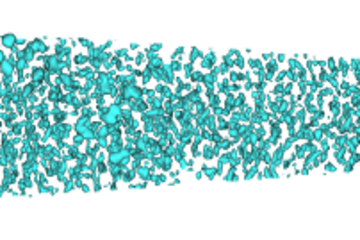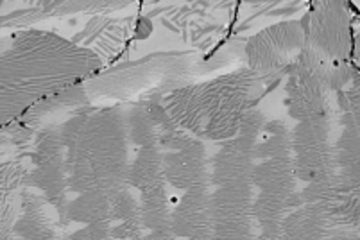All genres
1.
Journal Article
A generalized plane-wave formulation of k · p formalism and continuum-elasticity approach to elastic and electronic properties of semiconductor nanostructures. Computational Materials Science 95, pp. 280 - 287 (2014)
2.
Journal Article
A flexible, plane-wave based multiband k . p model. Optical and Quantum Electronics 44 (3-5), pp. 183 - 188 (2012)
3.
Journal Article
The object-oriented DFT program library S/PHI/nX. Computer Physics Communications 182 (3), pp. 543 - 554 (2011)
4.
Journal Article
Plane-wave implementation of the real-space k.p formalism and continuum elasticity theory. Computer Physics Communications 181 (4), pp. 765 - 771 (2010)
5.
Journal Article
Direct minimization technique for metals in density-functional theory. Physical Review B 79, 241103(R), pp. 1 - 4 (2009)
6.
Journal Article
Phonon-spectra and thermodynamic properties of the infinite polyalanine alpha-helix: A DFT-based harmonic vibrational analysis. Physical Review E 71, 031911 (2005)
7.
Journal Article
Role of semicore states in the electronic structure of group-III nitrides: An exact-exchange study. Physical Review B 72, 155317 (2005)
8.
Journal Article
Exact-exchange calculations of the electronic structure of AlN, GaN and InN. Computer Physics Communications 169, p. 28 (2005)
9.
Book
Development and Application of the S/PHI/nX Library. Südwestdeutscher Verlag für Hochschulschriften, Saarbrücken, Germany (2009), 164 pp.
10.
Conference Paper
A flexible, plane-wave-based formulation of continuum elasticity and multiband k.p models. 11th Intern. Conference on Numerical Simulation of Optoelectronic Devices, Rome, Italy, September 05, 2011 - September 08, 2011., (2011)
11.
Talk
Hydrogen solution enthalpies derived from first principles: Chemical trends along the series of transition metals. DPG Frühjahrstagung 2011, Dresden, Germany (2011)
12.
Talk
Implementation and application of the k.p-formalism to electronic structure and Coulomb matrix elements. Spring meeting of the German Physical Society (DPG), Regensburg, Germany (2007)
13.
Thesis - PhD
Development and Application of the S/PHI/nX Library. Dissertation, University of Paderborn, Paderborn, Germany (2009)
14.
Thesis - Diploma
Developing a general purpose database application for multiphysics. Diploma, Fachhochschule Aachen, Standort Jülich, Jülich, Germany (2008)
15.
Thesis - Master
Visualization and Modeling of Molecules and Crystals. Master, Brno University of Technology, Brno, Czech Republic (2008)











